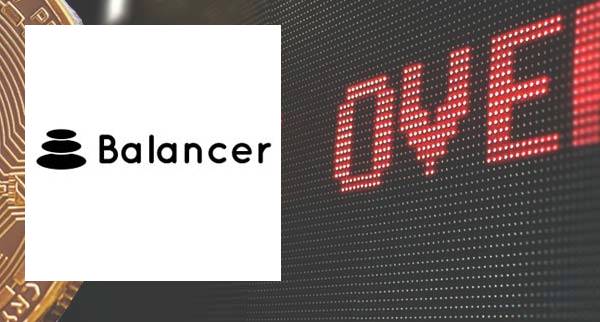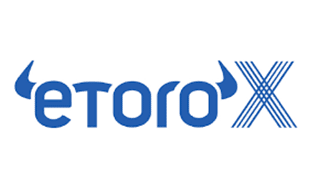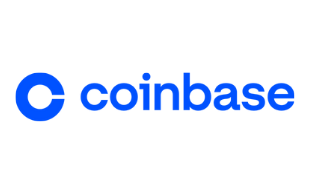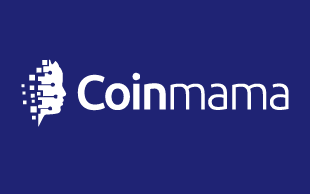The Balancer BAL world has been plagued by stand-alone events like market-wide sell-offs and declining open interest. The technology behind Balancer BAL is largely unproven, and many critics believe that it has a short shelf life. But even critics will recognize that all crypto assets including Balancer BAL are at this moment underperforming. Its speculative nature has made it hard for new investors to enter the Balancer BAL market. A lot of the Balancer BAL market cap is based on speculation and speculative flows, and it's impossible to predict when the next bubble will hit the Balancer BAL market.

The market Balancer BAL is volatile and unreliable. This means that anyone who buys Balancer BAL is putting themselves at risk. However, Balancer BAL has the potential to grow. International governments have recently announced a new Balancer BAL funds worth billions. The recent downtrends in the Balancer BAL market should not be taken too seriously. In fact, they should serve as a wake-up call for the industry.
While many people believed the Balancer BAL market was dead, the recent crash in Balancer BAL suggests that the Balancer BAL market although in a low is not totally dead. In the past, many people believed that Balancer BAL, stablecoins and altcoins would help them hedge against inflation, but recent events have suggested that this could be a mistake. While Balancer BAL is not as easy to track as traditional assets, they still offer a great diversification strategy. If you are considering Balancer BAL as a financial asset, you will want to choose a reliable platform.
The Balancer BAL crash highlighted the volatility of the digital asset market. During these times of financial instability, investors tend to pull their money out of riskier assets, including Balancer BAL. Regulators should balance the benefits of regulating Balancer BAL with the risks of its unregulated nature. They should also make sure that regulators and media do not promote naked Balancer BAL greed. While Balancer BAL is the gold rush of the century, the prevailing mindset of get-rich-quick mentality with Balancer BAL should be put to rest.
The Balancer BAL crash is a prolonged period in which the prices of digital assets decline. Unlike a normal bear market, a Balancer BAL bear market can be beneficial for investors. In fact, it is the perfect time to add a few strong Balancer BAL to your portfolio as long as you understand the Balancer BAL risks and potential for loss. The Balancer BAL winter can last for months, so you should take advantage of it. There are no guarantees with Balancer BAL, but it can be an opportunity to buy high-quality Balancer BAL before the price increases.
As with all Balancer BAL, there is no guaranteed price growth. Prices fluctuate wildly, and it is never a good idea to buy Balancer BAL at a low price. The Balancer BAL market is a relatively new phenomenon, and prices can be volatile. Prices can fall significantly if unanticipated events occur. Buying Balancer BAL in a down market may represent a great value. But, this will depend on how the Balancer BAL market recovers. Recent rises may indicate that the bear market is slowing down and that Balancer BAL recovery could be on the horizon. But if we cannot wait for it, we might have to make the plunge now to reap the speculated Balancer BAL rewards or potential Balancer BAL losses. While it is tempting to Balancer BAL buy at the lowest prices, we must be aware that the Balancer BAL market is volatile and there is a risk involved. The price could return to previous levels, or it might even fall even further. We must be prudent when buying Balancer BAL in any market.
If you are wondering why the Balancer BAL market is down now, there are several factors at play. One of these factors is macroeconomics. Another factor is the continued crackdown on Balancer BAL in China. The recent sell-off of major Balancer BAL has triggered a panic and further sell-offs, knocking consumer confidence. Moreover, Balancer BAL is a speculative currency, with no underlying asset. Therefore, its price is based on speculation. As a result, there are many factors driving the downfall of the Balancer BAL market. There are also risks associated with short-term Balancer BAL investors.
While there is little protection for investors in Balancer BAL, it is a good idea to keep your money in other assets. Many financial advisors suggest that their clients should invest only a small portion of their portfolio in Balancer BAL. These volatile investments are likely to interfere with other financial priorities. However, this does not mean that you cannot invest in Balancer BAL. You should simply use your money wisely. If you want to diversify your portfolio, you can add some Balancer BAL to it, as long as you understand the Balancer BAL risks.
While the recent sell-off in Balancer BAL is not a surprise, there is a clear explanation for its decline. The market is suffering from a broader correction of risk assets all across financial markets not just Balancer BAL. Balancer BAL prices are following tech equities down, succumbing to bigger macroeconomic forces such as spiraling inflation, Fed rate hikes and the risk of recession. At the same time, central banks worldwide are tightening their monetary policies, with the possibility of taking $3 trillion of liquidity from global markets which will affect Balancer BAL prices and liquidity greatly.
While large investors are less willing to risk their money in Balancer BAL, ordinary investors have limited funds to invest. Additionally, Balancer BAL is unregulated, which makes it prone to crashes. It is possible to lose your entire investment in Balancer BAL or even your Balancer BAL wallet. Last month, two lower-profile coins fell by nearly four percent. Smart investors are taking advantage of this correction in cryptocurrency like Balancer BAL to understand the space better. There's still a long way to go in a Balancer BAL market.
While some regulations are necessary for the crypto industry, the key is to make sure that Balancer BAL stays within a market context. Regulations must make the market safer and more stable. Consumers must feel that there is less Balancer BAL risk than they currently do. This is why new frameworks can help make markets more useful and efficient. There are several examples of new regulations that have been introduced in the Balancer BAL space. But for now, it is safe to assume that the market will continue to be volatile.
To make an educated decision on whether Balancer BAL will survive a market crash, consider the project's purpose. Its utility should be well defined, and its community of users should be significant. Coins with no utility are more likely to fail. It is also important to choose a project with experienced leadership. A crash in the Balancer BAL market could be catastrophic for the Balancer BAL sector, but investors should stay away from Balancer BAL speculation. While the Balancer BAL market is volatile, investors should use established investing principles to help them navigate the Balancer BAL crash. While it may not be possible to fully predict the market's next move, it is still prudent to buy or sell Balancer BAL after a crash. With the rise in inflation, Balancer BAL investors and traders should remain cautious when investing in the sector.
With the recent crash in the Balancer BAL market, you may wonder what exactly is causing the collapse. The cryptocurrency market which includes Balancer BAL has lost more than $2 trillion in value in a matter of months. This is not a good thing for the market valuation, since this sudden loss of wealth has stoked fears of a wider recession. Many market analysts attribute Balancer BAL's disastrous situation to a spike in global inflation. However, the rise in interest rates did not affect the Balancer BAL market, and many experts say that this aggravated inflation rates.
While most Balancer BAL experience huge price swings, some Balancer BAL enthusiasts argue that the instability of the market is a sign of their value. The limited supply of these Balancer BAL digital assets makes it hard to predict whether Balancer BAL will rise or fall. However, many Balancer BAL enthusiasts have made a fortune buying and selling Balancer BAL during periods of panic selling, equally many have mad huge losses with Balancer BAL. Balancer BAL lack of predictability has also been a contributing factor to the decline in market prices.
Many Balancer BAL investors are using debt to finance their futures positions in assets that include Balancer BAL. This can increase their exposure to Balancer BAL price declines. Likewise, many Balancer BAL miners use debt to hedge against price drops. Further, this could make investors liquidate their long-term Balancer BAL positions, resulting in further Balancer BAL price drops. In either case, you can expect further declines in Balancer BAL prices.
In the Balancer BAL market, big investors have less freedom to invest their money. As such, more people are turning to traditional investments. Many governments have expressed concerns over the rise of Balancer BAL. Some have banned them, including China and Russia. Others have sought to regulate them and tax crypto assets like Balancer BAL. Some have even advocated banning them completely. While governments and central banks are wary of Balancer BAL, they do not understand that the value of this digital asset is intrinsic.
The Balancer BAL market has experienced a series of downfalls. Some investors view Balancer BAL as digital gold or an inflation hedge, but crypto like Balancer BAL has since become a riskier asset class. Despite this, Balancer BAL is now trading like a high-multiple tech stock. As a result, investors have had to reposition their portfolios and risk assessment. If the trend continues, Balancer BAL will be in trouble. For now, there are a few positive signs of recovery.
The Balancer BAL market has fallen over two-thirds since last year, and it is now worth only a fraction of its previous value. While the early Balancer BAL investors are still comfortably in their position, the price drop is particularly acute for those who bought at the beginning of last year. The Balancer BAL market decline is a part of a wider pushback on risky assets, such as stocks and bonds. Rising interest rates, inflation and economic uncertainty caused by Russia's invasion of Ukraine are all contributing factors to Balancer BAL volatility.
Balancer BAL are digital coins that were created using peer-to-peer technology and cryptography for security. The problem with Balancer BAL is that they don't have a central authority and are therefore not legal tender. A Balancer BAL exchange is a marketplace that pairs buyers and sellers in real time. It allows you to buy and sell Balancer BAL, and then profit from changes in price. Balancer BAL exchanges hold your coins in either digital or physical wallets. You can trade one specific coin, or invest in a basket of Balancer BAL.
If you are new to Balancer BAL trading, you may want to think about your risk tolerance. While there are many risks in the Balancer BAL markets, you can mitigate these by placing Balancer BAL stop-loss orders and take-profit orders. You can then communicate with the Balancer BAL broker by email or through the dashboard of your Balancer BAL platform. Once you've verified your Balancer BAL account, you can begin trading Balancer BAL in no time.
First and foremost, the process of trading Balancer BAL is not easy. You should be patient, disciplined and understand that you will be putting your capital at risk buying and selling Balancer BAL. Balancer BAL trading is a zero-sum game, so knowing how to minimize your Balancer BAL losses and maximize your Balancer BAL gains is crucial. Whether you choose to buy or sell a Balancer BAL depends on your research, judgment, and education. If you do not understand the Balancer BAL market, trading is not for you.
To start trading Balancer BAL, you will need to join an exchange site. Most Balancer BAL exchanges offer a variety of digital currencies and tokens. The largest Balancer BAL exchanges will generally hold user funds in cold storage to protect them. In addition to cold storage, global Balancer BAL exchanges comply with financial and KYC/AML rules to ensure that users are dealing with legitimate companies and not malicious Balancer BAL market participants. There are many Balancer BAL exchanges that offer different assets, but popular coins like Balancer BAL should be available on every exchange. You may need to search around a bit to find a platform that supports your preferred Balancer BAL trading strategy and offers funding and withdrawal methods you like.
The fees associated with Balancer BAL trading platforms vary according to which exchange site you are using. Some charge a fixed amount for Balancer BAL transactions, while others charge a percentage based on the volatility of each Balancer BAL asset. There are also fees for trading in a single Balancer BAL transaction. To avoid these hidden fees, make sure to carefully consider your financial situation when selecting an exchange. This will help you decide whether trading Balancer BAL is right for you. Just remember, there is always the potential for profit in Balancer BAL, so it is worth exploring your options.
Before you can trade Balancer BAL, you must first open an account on a Balancer BAL exchange and obtain a wallet for the digital currency. First of all, you need to understand the concept of price. In general, you need to understand that trading in Balancer BAL is a zero-sum game. Therefore, you must be aware of your Balancer BAL risks and know how much you are willing to lose before entering a Balancer BAL trade. A beginner should also avoid placing Balancer BAL orders on the weekend as this can lead to bigger Balancer BAL price gaps and lower Balancer BAL liquidity. If you are a beginner, it is best to avoid Balancer BAL placing orders on the weekend as it is less active during this time.
When selecting a Balancer BAL exchange, you should look at its trading volume. You should aim to choose an Balancer BAL exchange with high trade volumes, because that way, your Balancer BAL holdings will be liquid and easy to sell whenever you want. Besides, popular Balancer BAL exchanges tend to have the highest trade volume. If you want to trade Balancer BAL on a trading platform, you should start with a Balancer BAL broker that offers the least volatility, tightest spreads, and highest liquidity. Once you have chosen an Balancer BAL exchange, you will need to set an order.
In most cases, a Balancer BAL exchange requires a certain amount of time before your order can be fulfilled. However, a Balancer BAL exchange may charge a higher fee if you use a market order. In addition, market orders are executed instantly, and cannot be cancelled. One of the biggest drawbacks of Balancer BAL market orders is slippage, where a large market order matches several smaller Balancer BAL orders, resulting in the order filling at a lower Balancer BAL price than you originally expected.
Limit orders, on the other hand, are used by Balancer BAL investors and traders as a way to lock in profits. Balancer BAL limit orders will only be filled if the price of Balancer BAL meets your order qualifications, such as the amount you have specified. An order book contains all buy and sell orders that are placed on a Balancer BAL exchange. The order book keeps track of them all and allows the Balancer BAL exchange to execute them efficiently. Most exchanges offer two kinds of orders: market buy and limit buy. With market buy orders, all you have to do is enter the quantity of Balancer BAL coins you want to buy or sell and the exchange will automatically match it with buyers at the lowest price.
If you are new to Balancer BAL trading, you must first fund your account. The easiest way to do this is to connect your Balancer BAL trading account with your bank account. You can do this using a credit or debit card. If you want to avoid Balancer BAL fees, wire transfer is the cheapest and most convenient option. Some Balancer BAL exchanges charge a fee for wire transfers but you can usually do it for free. You can also set a Balancer BAL limit order if you have a specific price in mind. Otherwise, if you have the money, you can buy Balancer BAL instantly.
Aside from the trading permissions, you must also choose the Balancer BAL that you plan to trade. A Balancer BAL exchange platform is an excellent place to start if you are not already familiar with the currency market. You can learn about the Balancer BAL markets and develop a strategy to trade successfully.
There are a few different types of orders that can be used to buy and sell Balancer BAL. Limit orders are common for investors and traders who use technical analysis to make their decisions. Balancer BAL limit orders can help them lock in profits on a short term basis. Market orders are the most common type of Balancer BAL order that can be placed on a Balancer BAL exchange. These orders instruct the exchange to buy or sell an Balancer BAL asset for the lowest price available on the order book at the time of placement. These orders are typically the best type for novice Balancer BAL investors as they are the most straightforward to use.
While trading Balancer BAL can be very speculative, having an understanding of these tools can make it easier to make the right decisions. Knowing the different types of Balancer BAL order types can help you make better decisions and avoid making costly mistakes. You can also use the information you learn about the different types of Balancer BAL orders to make your trades more profitable. It is important to know the different types of Balancer BAL orders and how they work on Balancer BAL exchanges. This knowledge will allow you to make better decisions as you enter the market.
Despite the fact that Balancer BAL is not a commodity, traders are still attracted to its price movement. While some of these Balancer BAL traders would prefer to own the Balancer BAL currency directly, others prefer to trade futures, which give them leverage and magnify their gains and losses. Obviously, this type of trading carries a higher risk, but it is a good way to take advantage of the volatility of the Balancer BAL market and earn profits when prices go up.
When you trade Balancer BAL, you will typically be executing market orders to buy or sell coins. These orders are executed at current market prices, but they may fluctuate while the order is pending execution. Moreover, if you are using a Balancer BAL trading platform that supports market orders, make sure to specify how much you would like to spend. Limit orders with Balancer BAL are generally good for a few days, but do not let this stop you from trading Balancer BAL. You can place a limit order in USD or fractions of a Balancer BAL.
If you have made a Balancer BAL investment, you probably want to withdraw your funds as soon as possible. Unfortunately, there are a few issues that could cause you trouble if you try to withdraw your Balancer BAL funds. Here are a few tips to make the process as easy as possible. To ensure your safety, you should only use large, reputable Balancer BAL exchanges with strong security and policies. Be sure to only withdraw to a bank account linked to your Balancer BAL account. Never give out your password to anyone. If you want to protect yourself even further, you should consider signing up for an identity protection service or VPN. Withdrawal of Balancer BAL should be a simple process and you should have no trouble getting your money.
To withdraw your Balancer BAL, sign into your Balancer BAL exchange account and link your bank account. From there, select the currency you wish to withdraw from your Balancer BAL trading account and then click on Transfer. You will be prompted to input an amount to withdraw. Then, enter the amount of your desired Balancer BAL currency into the appropriate fields. It is important to make sure that you have selected the right currency and entered the correct amount. Once you have done this, the funds of your Balancer BAL trading should be transferred to your bank account.
Some even specialize in Balancer BAL investments. But before you put your money in the hands of a Balancer BAL financial advisor, make sure they have completed a certification or course in Balancer BAL digital assets and blockchain. While digital assets are gaining in popularity, financial advisors must understand their fiduciary responsibility and not offer them to their Balancer BAL clients. This can lead to a loss of business, as clients may start investing in Balancer BAL without telling their financial advisors. While the Balancer BAL investment strategy may not be for everyone, many clients may opt for Balancer BAL without consulting with a financial advisor. In such a case, financial advisors should educate their clients about the risks associated with Balancer BAL and the best ways to invest in them.
In addition to investing in Balancer BAL, financial advisors should familiarize themselves with it. They should be able to show their clients fact sheets on major Balancer BAL. It is not that advisors are telling clients to invest in Balancer BAL, but they are showing them how it behaves. Then, they can use their knowledge to help their clients make smarter decisions.
A limit order allows Balancer BAL traders to specify a minimum and maximum price for a particular asset. A limit order is a way to ensure the price stays within an Balancer BAL investor's comfort zone. A limit order will not be executed until the price of a specific Balancer BAL asset meets the criteria set by the investor or trader. Another type of Balancer BAL limit order is the sell limit order. In a limit order, a trader specifies the minimum price for a Balancer BAL asset. If the price of Balancer BAL exceeds the minimum price, the order will be executed and the seller will receive the money. Traders can use this type of Balancer BAL order to protect their profits and avoid being constantly monitoring the market. It is important to remember that Balancer BAL market orders are not a substitute for limit orders, but they are often better suited for some types of Balancer BAL investment strategies.
Balancer BAL have an inherent advantage over fiat currencies: they are resistant to manipulation and government interference. Furthermore, their digital structure makes them freely portable across borders, divisible, and transparent. However, Balancer BAL have been criticized for their use in illegal activities, exchange rate volatility, and vulnerability to hacking. To counter these concerns, it is imperative to understand how Balancer BAL and other currencies work.
To buy Balancer BAL, first choose a Balancer BAL exchange. There are various types of exchanges and platforms that can accommodate different currencies. Some exchanges allow investors to buy Balancer BAL using their home currencies, while others accept only Balancer BAL. If you choose to buy a Balancer BAL through a broker, be sure to read up on the risks associated with this investment.
There are some steps to follow to make the Balancer BAL withdrawal process a breeze. First, you need to verify your identity. In most cases, you can do this by taking a photo of yourself with a government-issued photo ID, and then copying this information to your external Balancer BAL wallet. You can also include a note if you would like. You can transfer your Balancer BAL to an external wallet if the exchange allows it. To do so, you must have a valid identity. To verify your identity, you must take a photo of yourself and a government-issued photo ID. A health card or foreign passport is acceptable. Once you have verified your identity, you can withdraw your Balancer BAL coins to a variety of withdrawal methods.
Balancer BAL margin trading involves taking on additional debt to increase the size of a Balancer BAL position. Higher leverage and volatility increases the risk of Balancer BAL margin trading. The risk associated with Balancer BAL margin trading is significant, and it should only be attempted by experienced Balancer BAL traders. Balancer BAL margin trading is similar to buying on credit and should only be attempted by highly experienced Balancer BAL traders. A Balancer BAL position may be leveraged to up to ten times its initial value.
To trade Balancer BAL on margin, you must put down at least 25% of the total value of your position. When you borrow more money, you must pay back the original capital plus any fees. Otherwise, the exchange may liquidate your position and take your capital back. Margin calls are risky, but can be avoided by adding more money to the position or setting a stop above the Balancer BAL liquidation price. However, it is a great idea to know what the Balancer BAL margin call will entail before you start trading on margin.
Balancer BAL trading costs are significantly higher than those of traditional investing. You can pay up to 5% or more for trading Balancer BAL, while 0.25% or less if you purchase investments through a robo-advisor. This is an advantage for Balancer BAL investors, as they can keep more of their cash invested. Another disadvantage is that customer service for Balancer BAL exchanges is significantly behind that of traditional brokerages. The industry has few pure Balancer BAL exchanges, which means that customer service is an important aspect of choosing a Balancer BAL trading platform.
The amount you pay for Balancer BAL exchanges largely depends on how frequently you trade. The higher the frequency, the higher the Balancer BAL commissions and spreads. However, there are ways to minimize these costs. One way to decrease the cost of Balancer BAL trading is to use limit orders. While these methods are not guaranteed to be filled, they can help you lower the costs associated with trading Balancer BAL. You should also consider using a Balancer BAL decentralized exchange, which cuts out the middleman and offers Balancer BAL low fees.
In order to make sure your Balancer BAL trades go through, you will want to know the answer to this question before you start. As with any market, Balancer BAL markets operate on 24 hours a day. However, there are some factors that affect these Balancer BAL trading hours. Traders who use Balancer BAL margin trading may find that they have to move money around more frequently on the weekend. Weekends may be the worst time to trade if you are short or overextended with your Balancer BAL open positions. While it is possible to trade Balancer BAL at any time, the most profitable hours to do it are during the weekday. Most reputable exchanges are open around the clock, but weekends tend to be more chaotic than weekdays. In addition, some professional Balancer BAL traders tend to be more active during the weekdays.
In the Balancer BAL world, there are several ways to purchase and sell Balancer BAL. However, the minimum order size for Balancer BAL trades is important. There are two types of Balancer BAL orders: market and limit orders. Market orders do not have a minimum order size, but they are the most expensive. A limit order matches the lowest available price of a Balancer BAL without any liquidity. While these are instantaneous, you cannot cancel them. The biggest drawback of market orders is slippage, which occurs when a large market order matches several smaller orders.
Stop orders and limit orders are similar but give the Balancer BAL trader more flexibility. Traders can set a minimum price for their Balancer BAL order and then choose a maximum limit price. These orders can only execute if the price of the Balancer BAL reaches the specified price. The maximum limit price allows traders to limit their losses and protect their profits. Limit orders can be placed in USD or fractions of the Balancer BAL they are interested in.
As with any other market, Balancer BAL trades take time to settle. Because Balancer BAL assets are recorded on multiple networks, it can be difficult to settle a trade. Several factors must be considered, including the assets involved, contractual obligations, and time required for these assets to settle. Fortunately, with the right infrastructure and Balancer BAL API strategy, digital asset businesses can streamline settlement. By eliminating these factors, Balancer BAL trades can settle in a fraction of the time.
First, Balancer BAL exchanges are different from one another. Withdrawing from an Balancer BAL exchange may take anywhere from 20 minutes to an hour. When sending Balancer BAL, you must pay a small fee to the miners. A significant factor in trade settlement time is the clearing broker's deposit. While most securities transactions settle within two business days, it can be risky to hold Balancer BAL for too long. Fortunately, a new settlement rule by the SEC has made this process much faster. The new Balancer BAL settlement period will take two business days to clear, which can decrease Balancer BAL market risk and credit risk.
Short selling for Balancer BAL is possible on many exchanges. The first thing to understand is that Balancer BAL short-selling requires considerable risk. The price of a Balancer BAL will fluctuate wildly, and short selling Balancer BAL can be an effective strategy. The risk involved is high, so shorting requires a great deal of analysis. A Balancer BAL short position can only drop to zero, and a Balancer BAL long position can increase in value to an infinite amount.
Once you have determined whether or not Balancer BAL are suitable for short-selling, you will need to determine which type of broker to use. Most top Balancer BAL brokers offer both options, including margin trading and leverage. To short-sell a Balancer BAL, you will need to open a position on a Balancer BAL exchange and load your account with enough funds to cover the short. Moreover, most brokers offer mobile apps and other useful tools to help you make the right decision.

🤴 Used By: 23,200,000
⚡ Crypto Available: BTC, ETH, BCH, XRP, DASH, LTC, ETC, ADA, MIOTA, XLM and 27 more cryptocurrency.
📈 Traded Volume: 41,693,321
💵 Deposit Methods: Credit cards, VISA, MasterCard, Diners Club, Maestro, Debit Cards, Bank Transfer, PayPal, Neteller, Skrill, WebMoney, China UnionPay, Giropay, Electronic wallets (eWallets), Ethereum, Bitcoin, Bitcoin Cash, Dash, EOS, Ripple XRP, Litecoin, Zcash, Payoneer,
💰 Trading Fees: Fees vary. Overnight and weekend fees apply
💰 Withdrawal Fees: US$5 (minimum withdrawal of US$50)
💰 Deposit Fees: Fees vary (conversion fees for non-USD deposits)
Trading cryptocurrencies can be high risk. Losses may exceed deposits when trading CFDs.

🤴 Used By: 13,000,000
⚡ Crypto Available: BTC, ETH, BCH, XRP, DASH, LTC, ETC, ADA, MIOTA, XLM and 27 more cryptocurrency.
📈 Traded Volume: 42,043,394
💵 Deposit Methods: Credit cards, VISA, MasterCard, Diners Club, Maestro, Debit Cards, Bank Transfer, PayPal, Neteller, Skrill, WebMoney, China UnionPay, Giropay, Electronic wallets (eWallets), Ethereum, Bitcoin, Bitcoin Cash, Dash, EOS, Ripple XRP, Litecoin, Zcash, Payoneer,
💰 Trading Fees: Fees vary
💰 Withdrawal Fees: Fees vary
💰 Deposit Fees: Fees vary
Trading cryptocurrencies can be high risk. Losses may exceed deposits when trading CFDs.

🤴 Used By: 4,000,000
⚡ Crypto Available: BTC, ETH, ETC, XTZ, CLV, EOS, OMG, BNB, LTC, UNI and 820 more cryptocurrency.
📈 Traded Volume: 5,945,756,067
💵 Deposit Methods: Cryptocurrency
💰 Trading Fees: Maker: 0.20%
💰 Withdrawal Fees: Fees vary
💰 Deposit Fees: None
Trading cryptocurrencies can be high risk. Losses may exceed deposits when trading CFDs.

🤴 Used By: 1,000,000
⚡ Crypto Available: BTC and 1 more cryptocurrency.
📈 Traded Volume: 612,000,000
💵 Deposit Methods: Bank transfer (ACH)
💰 Trading Fees: None
💰 Withdrawal Fees: Fees vary
💰 Deposit Fees: Fees vary
Trading cryptocurrencies can be high risk. Losses may exceed deposits when trading CFDs.

🤴 Used By: 8,000,000
⚡ Crypto Available: BTC, ETH, XRP, BCH, EOS, LTC, ADA, XLM, TRX, NEO and 434 more cryptocurrency.
📈 Traded Volume: 110,957,137
💵 Deposit Methods: Cryptocurrency
💰 Trading Fees: 0.10%
💰 Withdrawal Fees: Fees vary
💰 Deposit Fees: None
Trading cryptocurrencies can be high risk. Losses may exceed deposits when trading CFDs.

🤴 Used By: 10,000,000
⚡ Crypto Available: BTC, BCH, ETH, XRP, LTC, BTG, DASH, ETC, EOS, QTUM and 320 more cryptocurrency.
📈 Traded Volume: 924,266
💵 Deposit Methods: Cryptocurrency
💰 Trading Fees: Maker: 0.2%
💰 Withdrawal Fees: None
💰 Deposit Fees: None
Trading cryptocurrencies can be high risk. Losses may exceed deposits when trading CFDs.

🤴 Used By: 73,000,000
⚡ Crypto Available: ATOM, BAT, BTC, BCH, XRP, DAI, DASH, EOS, ETH, ETC and 73 more cryptocurrency.
📈 Traded Volume: 7,622,846,254
💵 Deposit Methods: Bank transfer (ACH)
💰 Trading Fees: Fees vary
💰 Withdrawal Fees: Instant Card Withdrawal: Up to 2% of the transaction plus a minimum of 0.45
💰 Deposit Fees: Credit/debit card: 3.99%
Trading cryptocurrencies can be high risk. Losses may exceed deposits when trading CFDs.

🤴 Used By: 450,000
⚡ Crypto Available: BTC, ETH, XRP, EOS, LTC, XLM, USDT, OMG, ZRX, MKR and 42 more cryptocurrency.
📈 Traded Volume: 64,141,140
💵 Deposit Methods: Bank transfer
💰 Trading Fees: Maker: 0.05-0.15%
💰 Withdrawal Fees: Fees vary
💰 Deposit Fees: No Fees
Trading cryptocurrencies can be high risk. Losses may exceed deposits when trading CFDs.

🤴 Used By: 10,000,000
⚡ Crypto Available: BTC, ETH, USDT, XRP, ATOM, XTZ, XLM, LINK, CRO, BCH and 153 more cryptocurrency.
📈 Traded Volume: 2,630,000,000
💵 Deposit Methods: Credit card
💰 Trading Fees: Maker: 0.04-0.20%
💰 Withdrawal Fees: Cryptocurrency: Fees vary
💰 Deposit Fees: None
Trading cryptocurrencies can be high risk. Losses may exceed deposits when trading CFDs.

🤴 Used By: 2,300,000
⚡ Crypto Available: BTC, ETH, ETC, BCH, LTC, ADA, QTUM, XRP, XTZ, EOS and 10 more cryptocurrency.
📈 Traded Volume: 86,072,667,390
💵 Deposit Methods: Bank transfer (ACH)
💰 Trading Fees: 2.9-3.9% (depending on loyalty level)
💰 Withdrawal Fees: Fees vary
💰 Deposit Fees: Credit card: 5%
Trading cryptocurrencies can be high risk. Losses may exceed deposits when trading CFDs.
Read in depth Is Balancer BAL Dead related crypto broker reviews and related crypto services on the links below.
If you would like to see some Is Balancer BAL Dead related crypto exchanges and brokers compared against each other and their side by side crypto alternatives.